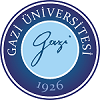
Send us your opinions, requests and evaluations.
⇒ Auditory Amplification Unit Conventional hearing aid and auditory implant device applications, which are used to compensate for hearing loss, are applied to the patient with mathematical and physiological algorithms. The applications of assistive auditory systems used together with these basic auditory amplification devices are also in the field of activity of this unit. Amplification applications for children and adults are carried out in accordance with the clinical picture of the patient and the problems experienced by the patients with the devices are eliminated.
⇒ Adult Audiology Unit The adult audiology unit is the unit where the hearing of patients over 18 years of age, with hearing loss and/or balance complaints, pure tone audiometry, acoustic impedance and acoustic reflex, auditory amplification users are evaluated, and amplification gains are evaluated with free field audiometry.
⇒ Tinnitus Unit Through objective and subjective audiological evaluation batteries, first the causes of the problem, tinnutus severity and tinnitus mapping are determined, and then therapy recommendations are given according to the psychophysical results of the personalized tinnitus sound.
⇒ Vestibular Rehabilitatıon Unit Vestibular Rehabilitation is an exercise-based treatment for the management of symptoms associated with vestibular system disorders. The vestibular system is a link between the vestibular receptors in the inner ear and other areas in the central nervous system, keeping steady and balanced while moving and performing everyday tasks. When the vestibular system is disrupted by an illness, injury, or the aging process the resulting symptoms include dizziness, vertigo, loss of balance, vision problems, nausea. The most commonly diagnosed vestibular disorders include benign paroxysmal positional vertigo (BPPV), labyrinthitis or vestibular neuritis, Meniere’s disease. Vestibular disorders also include superior semicircular canal dehiscence, acoustic neuroma, perilymph fistula, ototoxicity, enlarged vestibular aqueduct, migraineassociated vertigo, and Mal de Débarquement. The exercise-based treatment helps reduce dizziness, vertigo, imbalance issues, and falls. The vestibular rehabilitation program is
individualized according to the patient’s diagnosis and symptom presentation.
The exercises for vestibular rehabilitation can be categorized into three 1) Habituation, 2) Gaze Stabilization, and/or 3) Balance Training. Habituation exercises are used to treat symptoms of dizziness that are produced because of self-motion and/or produced because of visual stimuli. Gaze Stabilization exercises are used to improve control of eye movements. Balance Training exercises are used to improve steadiness so that daily activities for self-care, work, and leisure can be performed successfully.
⇒ Auditory Rehabilitation Unit What is Audiological Rehabilitation?Auditory rehabilitation, which is also called audiological rehabilitation, hearing rehabilitation and rehabilitative audiology is; improving understanding and speaking skills for children and adults who use hearing device and/or cochlear implant due to hearing loss.
What are the Aims of Auditory Rehabilitation?
Ensuring that the individual uses the best hearing level which gained with hearing device and/or cochlear implant,
Matching the information coming to the brain through hearing with meaning and improving language and speaking skills in this context,
Increasing the quality of life of the individual and his/her family by eliminating the academic, communicative and psychosocial deficiencies related to hearing loss.
What Does Auditory Rehabilitation Include?
It includes basic auditory and listening trainings for children and adults with hearing loss.
In the auditory rehabilitation process, a personalized program should be prepared initially. During the preparation process, necessary evaluations are made by considering the type and degree of hearing loss of the child / adult, age of diagnosis and device use, communication and language skills. The content of the program should cover all areas of development that the individual needs.
As content; auditory perception development, language and speech development, speech sounds development, support of communication and social skills can be counted.
The development of auditory perception includes the stages of phonological awareness, phonologic recognition, phonological discrimination (two or more speakers, similarity/difference between environmental stimuli) and understanding / conceptualization (matching the sound heard with meaning).
Language and speech development is receptive and expressive language development. Skills in the use of structures related to the use of syntax (grammatical structure), semantics (content), morphology, phonology and pragmatic language (use of language in different social situations), which are components of the language, are supported. Age-appropriate concept development training, auditory detection of speech sounds and their recognition and distinction in syllables, words and sentences are among the language and speech development stages supported in the process. In order to support speech production, educational support is also provided for the development of articulation skills.
Family involvement is extremely important in Auditory Rehabilitation, and using the device all day is a prerequisite for success in rehabilitation.
The final result desired to be achieved in the Auditory Rehabilitation process for children is the participation of the child in society as a productive and self-actualizing individual, who gains language and speech development, increases his academic, communicative and social skills, and has self-confidence.
⇒ Pediatric Audiology Unit Hearing screening tests and after screening early diagnostic evaluations are carried out in this unit. The purpose of newborn hearing screening program is to detect infants with hearing loss in the first three months of life and to make the necessary interventions before six months and to start both instrumentation and educational study. Finding out hearing loss early can give these babies a better chance of developing language, speech, and communication skills. The definitive diagnosis in babies who have failed hearing screening should be made with more advanced methods. Age-appropriate auditory evaluation is performed for the purpose of evaluating hearing loss in infancy and childhood. Hearing evaluation of children is made by using objective and subjective tests appropriate to the age and developmental characteristics of the child. Objective tests include immitansmetric mesurements, TEOAE, DPOAE, ABR, ASSR, Middle and Late latency evaluations with hearing aid and cochlear implant. Subjective hearing tests include pure tone audiometry evaluations (ear spesific and free field audiometric evaluations) and speech audiometry. According to the age of the individual, evaluations are made with Behavioral Observation Audiometry, Visual Reinforcement Audiometry , Conditioned Play Audiometry is selected for appropriate age.

Send us your opinions, requests and evaluations.